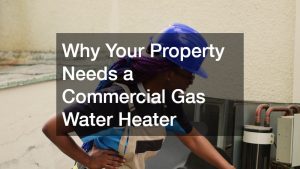Although most workplaces are deemed safe, some jobs will require a reasonable degree of safety measures, especially since there’s bound to be potential hazards. In certain types of industries, such as construction, repair, and maintenance, safety equipment is needed to minimize injuries in the workplace.
Of course, the main difference between safety equipment and the usual casual wear that we have to use is that the fabric and the materials used to manufacture such equipment are explicitly designed to counter specific hazards for a task.
For instance, safety boots are designed with traction so you won’t have to slip whenever you’re on slippery surfaces. In addition to traction, it’s also quite sturdy against certain chemicals while withstanding temperature changes. Almost all types of safety equipment will follow this design pattern as a way of keeping the user safe from harm. Still, more safety equipment features will depend on the type of environment that it’s used in.
It’s not really a question that most people find themselves asking, but it is an important question nonetheless: how would you know that some safety tools are effective in situations? Sure, we’ve probably heard about lots of stories and advertisements of how a certain product and tool has been “tried and tested” in certain types of scenarios, but how does it really live up to all the hype?
Hazard Assessment
The first step, when knowing what type of equipment you will need to bring a certain task is by assessing the hazards that are in place. Several government agencies, such as the Occupational Health and Safety Administration and Australia’s Public Administration and Safety, have enumerated hazards that can be detrimental to our physical well-being. ;
In almost any workplace, hazard assessment is paramount in preventing any future potential hazards. Contrary to what most people think, safety does not stop in industrial areas; there are hazards in offices and workplaces that can pose even more dangers to those that are unaware. Here are some hazards that most workers will need to know:
- Physical Hazards — This includes extreme heat, high voltage electricity, grounded objects, falls, slippery surfaces, sharp edges, and incredibly low temperatures.
- Biological hazards — As the name suggests, this includes corrosive fluids, poisonous fumes, radiation, dust, pathogens, and just about anything that can be detrimental to your overall biology.
For certain types of facilities and workplaces, such as nuclear power plants, some hazards such as radiation and chemicals, are more common than hazards like electrical hazards. Still, it’s important to be ready for all types of hazards; just because certain personal protection equipment (PPE) are geared towards specific hazards doesn’t mean that it will be the only thing that will happen in the workplace.
While equipment is explicitly developed and designed for certain types of hazards, safety equipment is all-around and can be used for any situation. In most cases, construction equipment is designed for the safety of their wearer. There is also state-of-the-art headwear, such as the Speedglass 9100, which is known for being able to take on any type of potential hazard.
What Makes this Equipment Safe?

There are several types of equipment that will have their own strengths and merits, but what makes this type of equipment safe? How would we know that a construction helmet can withstand the kinetic energy of an object that is falling from meters above the ground?
This leads us back to the last section that we have discussed. It will usually depend on the situation. For helmets like those used in motorcycles, it will depend on the speed that you’re going and the force of impact on the helmet. In terms of biological hazards, PPE’s safety that is designed to filter out virulent materials will have its efficiency based on how well it can prevent that biological hazard from compromising the PPE.
It’s also important to note that these government agencies will approve and label certain safety equipment for use. If the particular equipment is considered safe for use, it will guarantee your safety in most situations. Such equipment has been tested in controlled environments.
There are different ways of protecting yourself from any given situation. But the best way of ensuring your safety is by having the right safety equipment. Ultimately, it’s best not to get too anxious about your safety equipment and what it can and can’t do. Mindfulness and being aware of your surroundings are better than solely relying on your equipment for protection and safety.
Safety should always be your first concern, but mindfulness is needed to prevent injuries and hazards. Prevention is better than having to spend thousands of dollars in healing from injuries.







